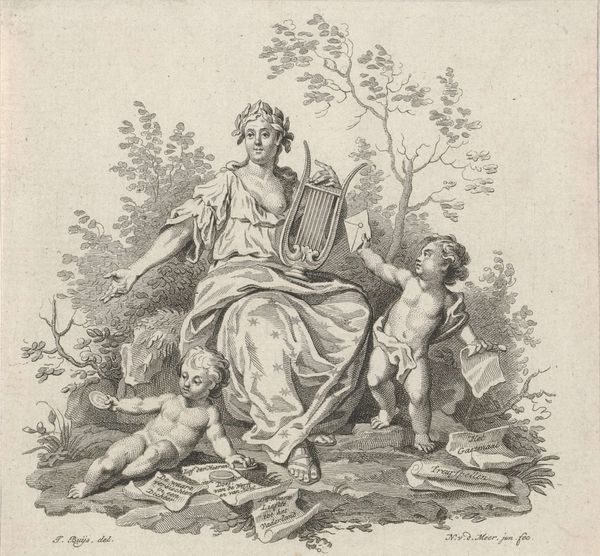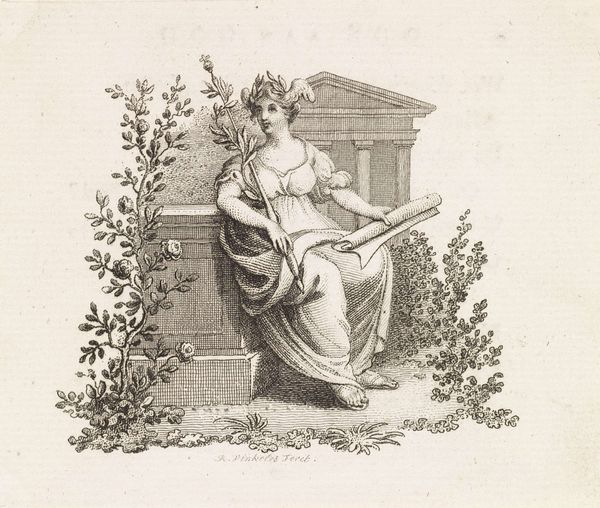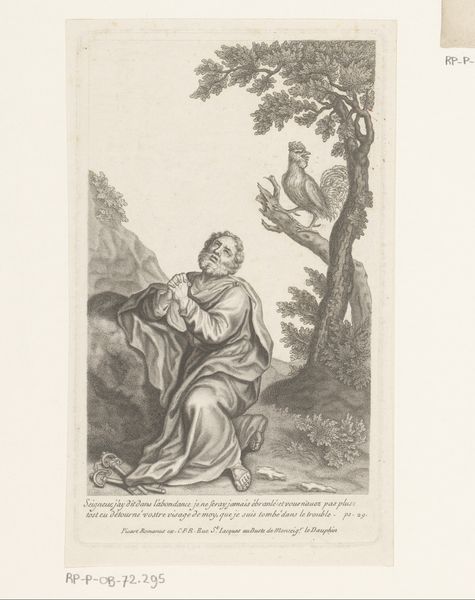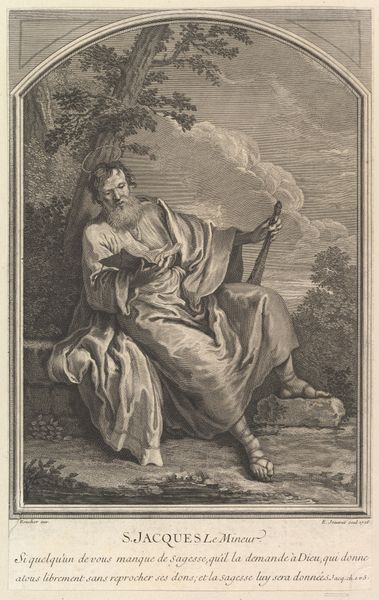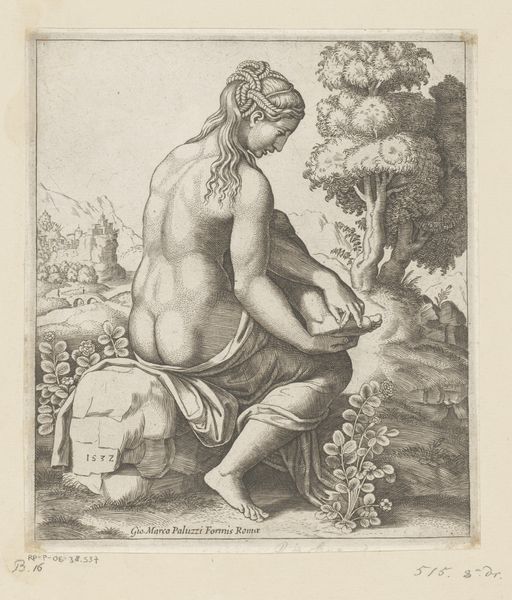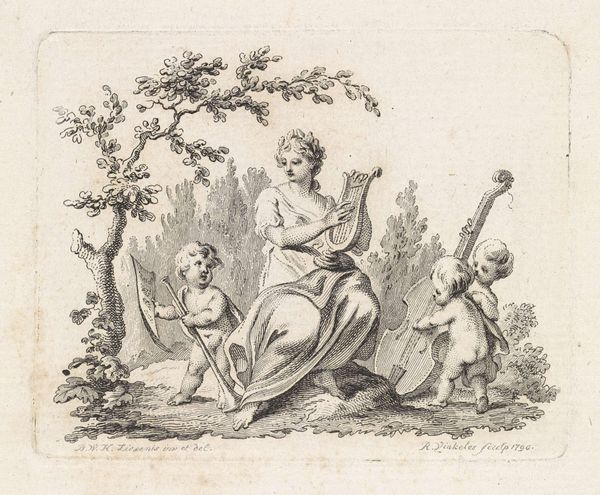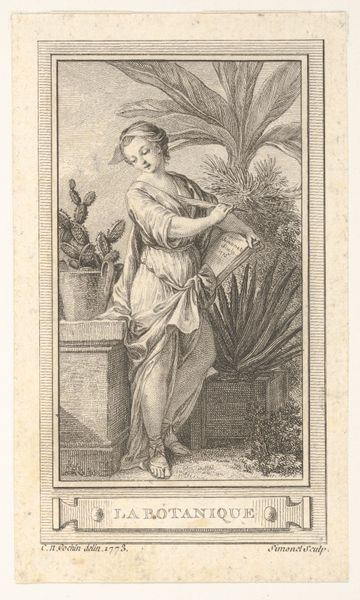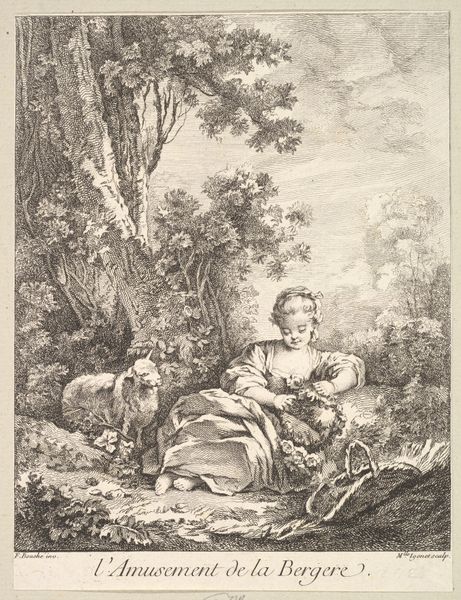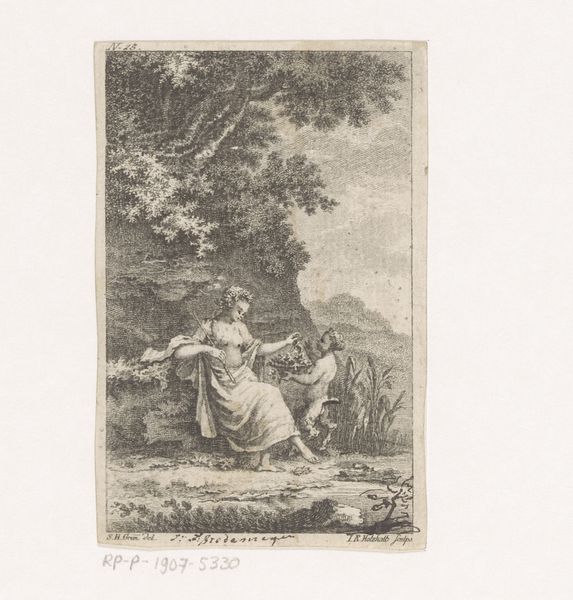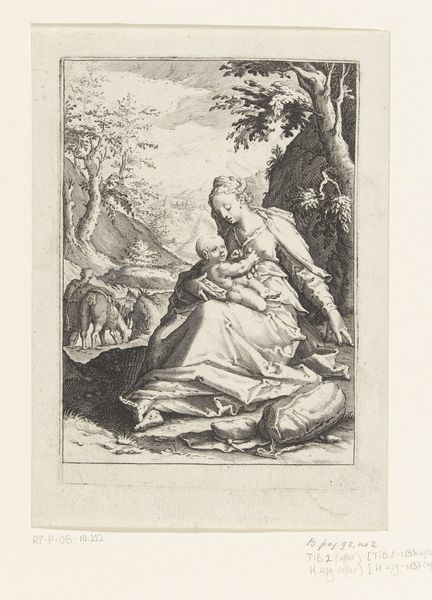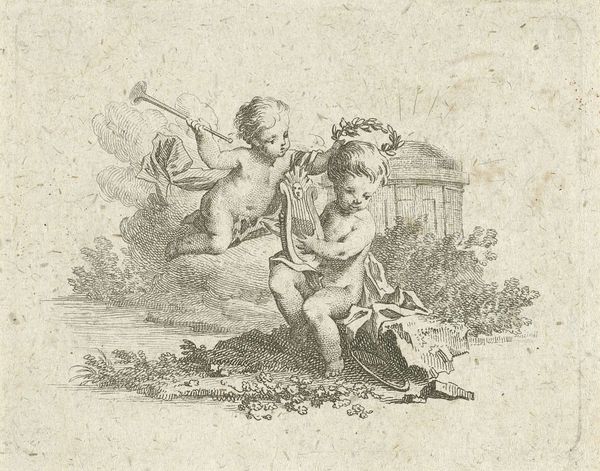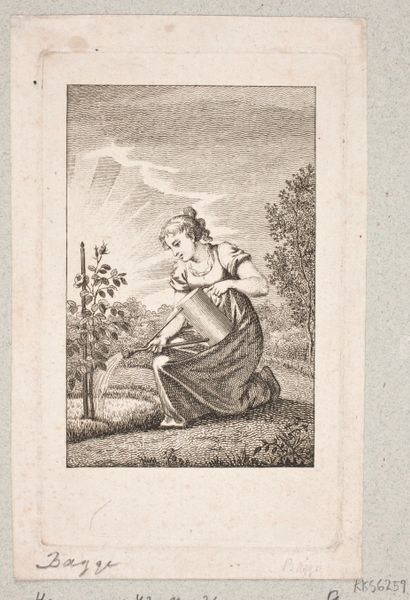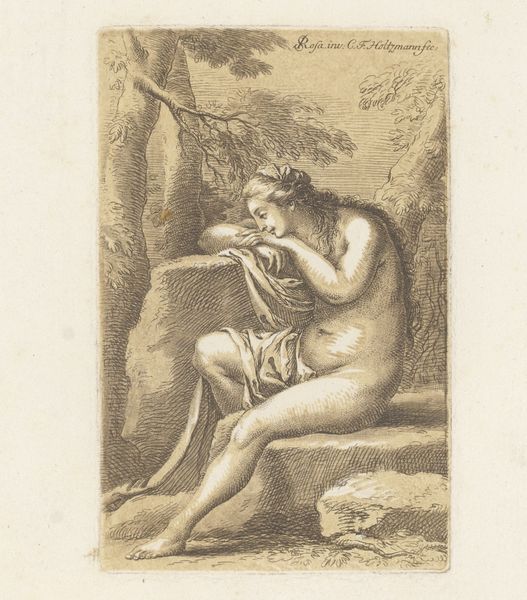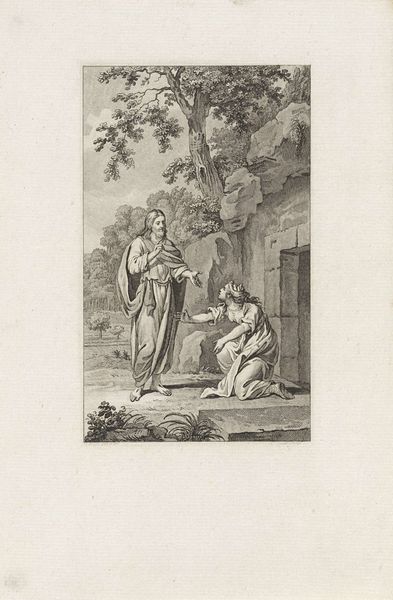
drawing, watercolor
#
portrait
#
drawing
#
11_renaissance
#
watercolor
#
genre-painting
#
watercolor
Dimensions: height 262 mm, width 247 mm
Copyright: Rijks Museum: Open Domain
Curator: What strikes me immediately is the delicate nature of this work; it seems fragile, almost as if it could fade away if exposed to too much light. Editor: Indeed, it does possess an ephemeral quality. This drawing, titled "Knielende vrouw naast plant" or "Kneeling Woman Beside a Plant" resides here at the Rijksmuseum and was created sometime between 1688 and 1698 by an anonymous artist. Executed in watercolor, it presents a figure in quiet contemplation. Curator: Contemplation or perhaps supplication? Her clasped hands and upturned gaze suggest a plea, but to whom, and for what, remains unsaid. The fact that it is genre-painting and a portrait raises the stakes on understanding the identity politics and the cultural expectations put on women in the late 17th century. Is the plant some kind of signal too? Is she asking forgiveness? Or, is she simply trapped in a society that requires this type of subjugation to a God or maybe, to an oppressive male figure? Editor: It’s tempting to ascribe such loaded symbolism. It could also be the depiction of a scene of daily devotion, fitting with a social emphasis on piety and religious observance at the time. Look at the woman’s garments. That is, considering socio-political history is to see here an emerging bourgeoisie seeking connection to symbolic imagery with women and gardens... The necklace, for instance. Or even that she wears a fancy hairstyle! But if one really wanted to understand its public role we’d need to dive deep into Dutch cultural nuances of the era to know better how devotional themes were circulated. Curator: But doesn't that just normalize existing oppressive social roles? Looking beyond devotional representation of femininity to think critically is crucial to consider this artwork now in terms of broader intersectional narratives that challenge, instead of reproducing gendered and social power dynamics. Editor: I see your point. Without solid context to determine what this scene meant at the time, projecting current perspectives does create risk. However, those projected ideas are still worthwhile conversations, given their influence on understanding ourselves today in relation to art’s enduring social function through history. Curator: Perhaps the lasting value then resides precisely in that ambiguity, that openness to varied readings over time which encourage the interrogation of how images operate, past and present. Editor: Precisely, and our dialogue reflects art history’s dynamism, doesn’t it? Whether it affirms social constructs or motivates change, it can continue teaching us!
Comments
No comments
Be the first to comment and join the conversation on the ultimate creative platform.
